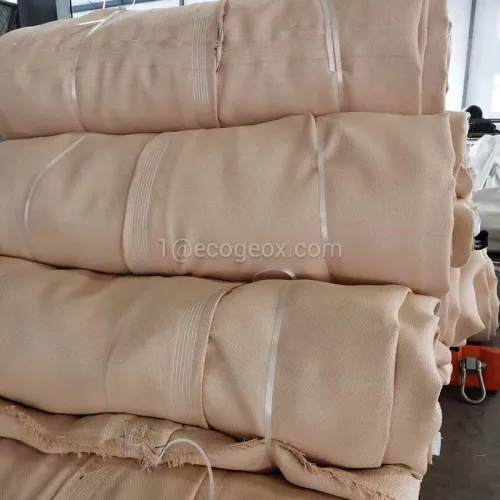Geotube technology, also known as geotextile tube technology, is a proven and innovative method for containing, dewatering, and stabilizing soil, sludge, sediments, and other materials in a cost-effective and environmentally friendly manner. Geotubes, which are large, tube-shaped containers made of high-strength geotextile fabric, play a central role in this technology. Here's how Geotube technology works to contain and stabilize various materials:

Geotubes are typically available in various sizes and are selected based on the specific project requirements. When dealing with contaminated sediments, sludge, or other materials, the first step is to pump or dredge these materials into the Geotube. As the material enters the tube, the geotextile fabric acts as a filter, allowing water to pass through while retaining the solid particles.
One of the primary functions of Geotubes is dewatering. As the contaminated material is pumped into the Geotube, excess water drains through the porous geotextile fabric, leaving behind dewatered, consolidated solids. This process significantly reduces the volume of the material, making it easier and more cost-effective to manage and transport. The rate of dewatering depends on factors such as the type of material, geotextile properties, and environmental conditions.
After dewatering, the remaining solids inside the Geotube become stabilized. This means that the solid material is immobilized within the tube, reducing the risk of erosion, spreading of contaminants, or re-suspension of sediments in water bodies. The geotextile fabric not only retains the solid particles but also helps in preventing the escape of any harmful substances or contaminants.
Geotubes also aid in the consolidation of the material. The weight of the dewatered material and the confinement provided by the Geotube cause the solid particles to settle and compact, further reducing the volume and increasing the stability of the contained material. This consolidation process can take several weeks or months, depending on the specific project conditions.
Geotube technology offers several environmental benefits. By dewatering and stabilizing materials in a controlled manner, it prevents the release of contaminants into the surrounding environment, including nearby water bodies. Additionally, the reduced volume of material minimizes the need for large disposal sites or landfills, which can be costly and environmentally detrimental.
Geotube technology is highly versatile and can be applied to a wide range of applications, including:
Dredged sediment management: It's commonly used to dewater and stabilize sediments removed from water bodies during dredging operations.
Industrial waste and sludge management: Geotubes are used to treat and dewater industrial waste materials, such as coal ash, mine tailings, and various sludges.
Stormwater and runoff control: They can be used to filter and retain sediments and pollutants in stormwater management systems.
Erosion control: Geotubes are employed to stabilize shorelines, protect against erosion, and prevent sediment runoff into water bodies.
Geotubes are designed to be durable and can withstand harsh environmental conditions, including exposure to sunlight, water, and chemicals. This ensures that they remain effective over an extended period, providing long-term containment and stabilization solutions.
In summary, Geotube technology is a versatile and sustainable method for containing, dewatering, stabilizing, and consolidating various materials, including contaminated sediments and industrial wastes. By utilizing geotextile tubes as containment vessels, this technology offers numerous environmental and cost-saving benefits while addressing a wide range of project needs in construction, environmental remediation, and infrastructure development.
Copyright:@2020-2021
Comments Please sign in or sign up to post.
0
0 of 500 characters used